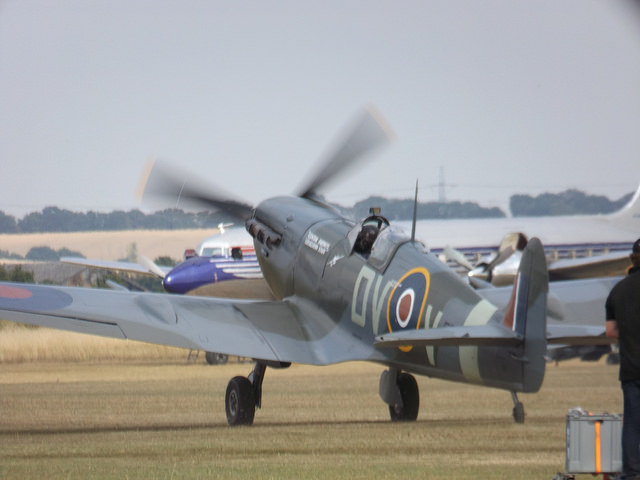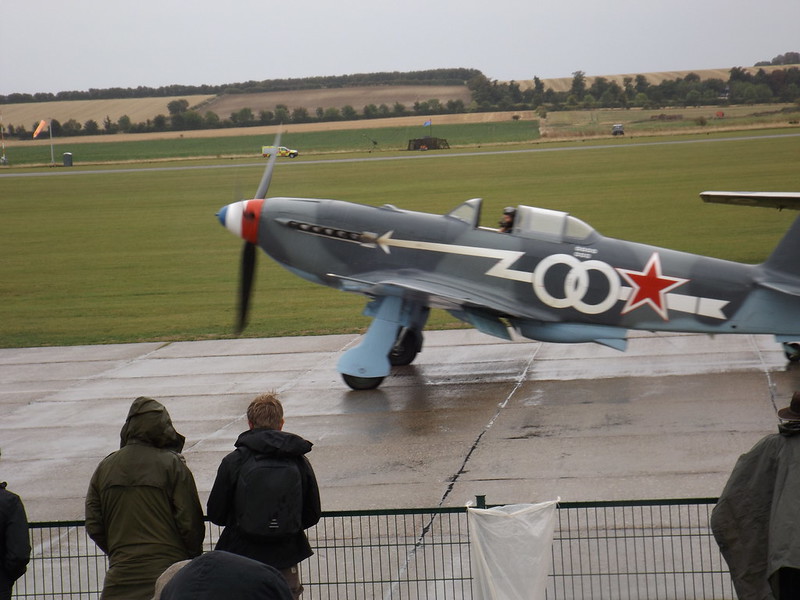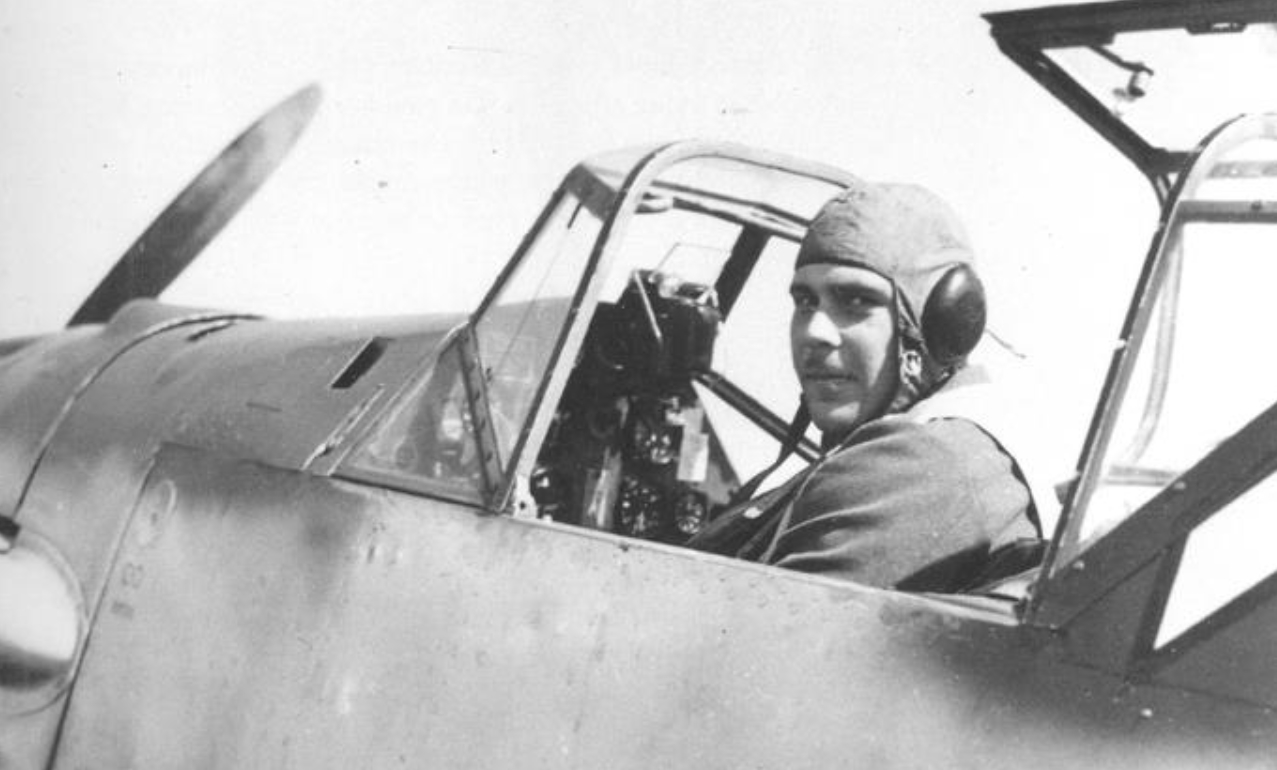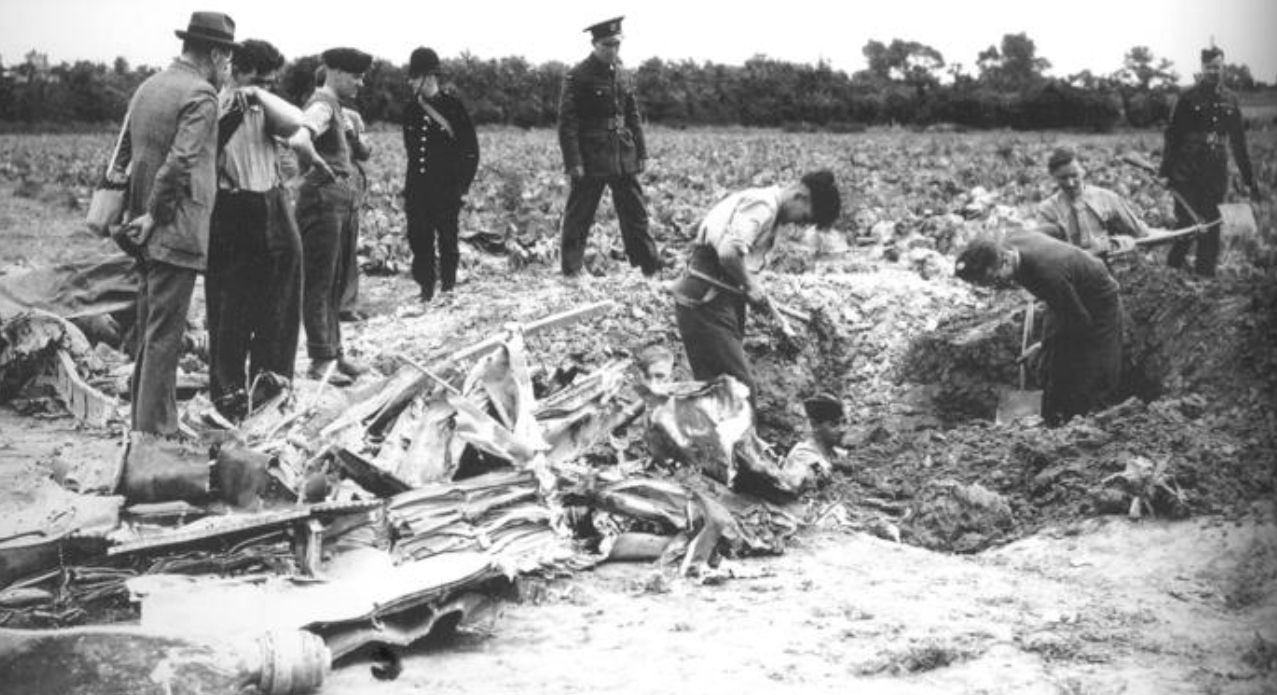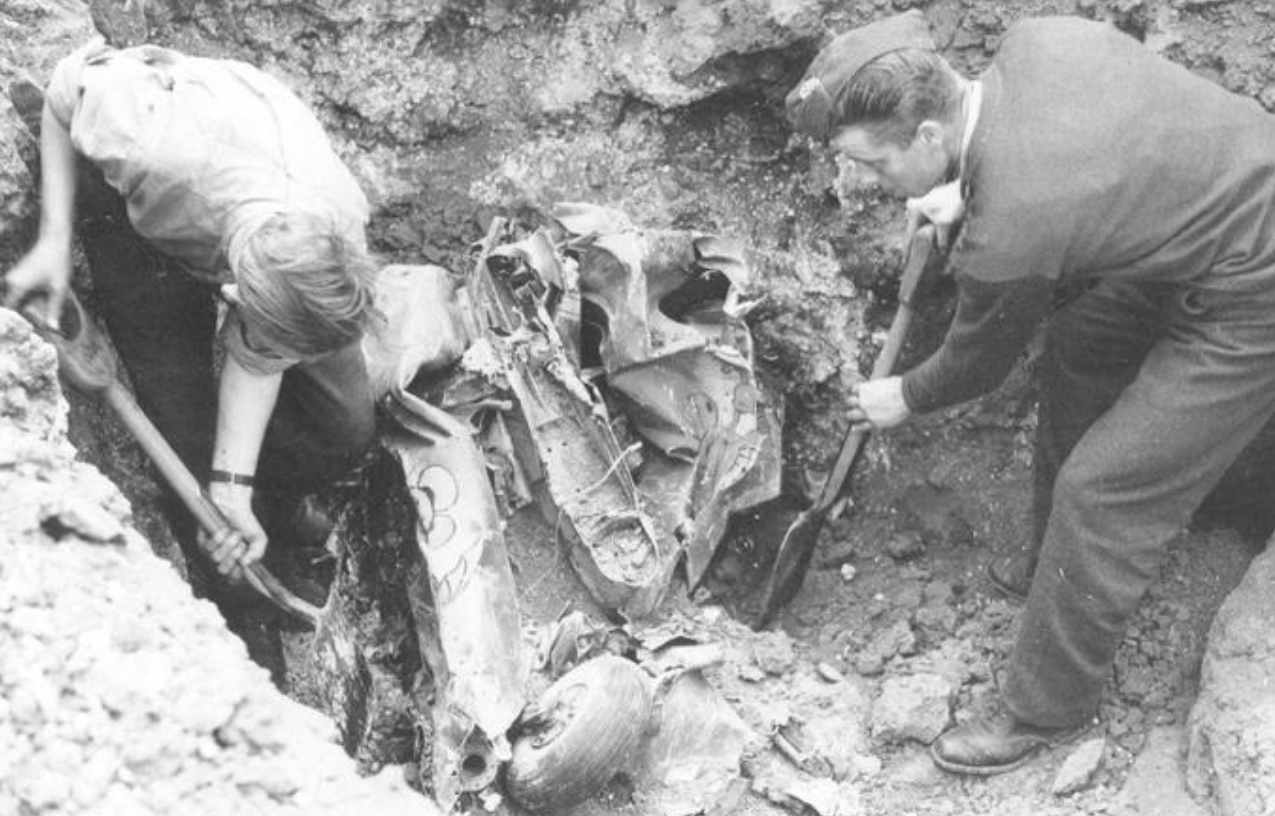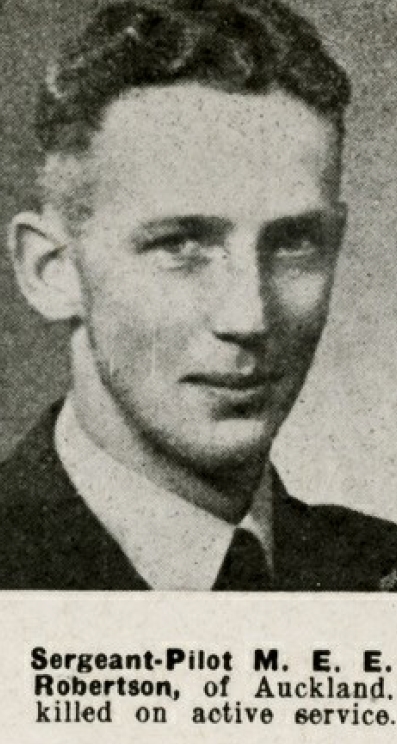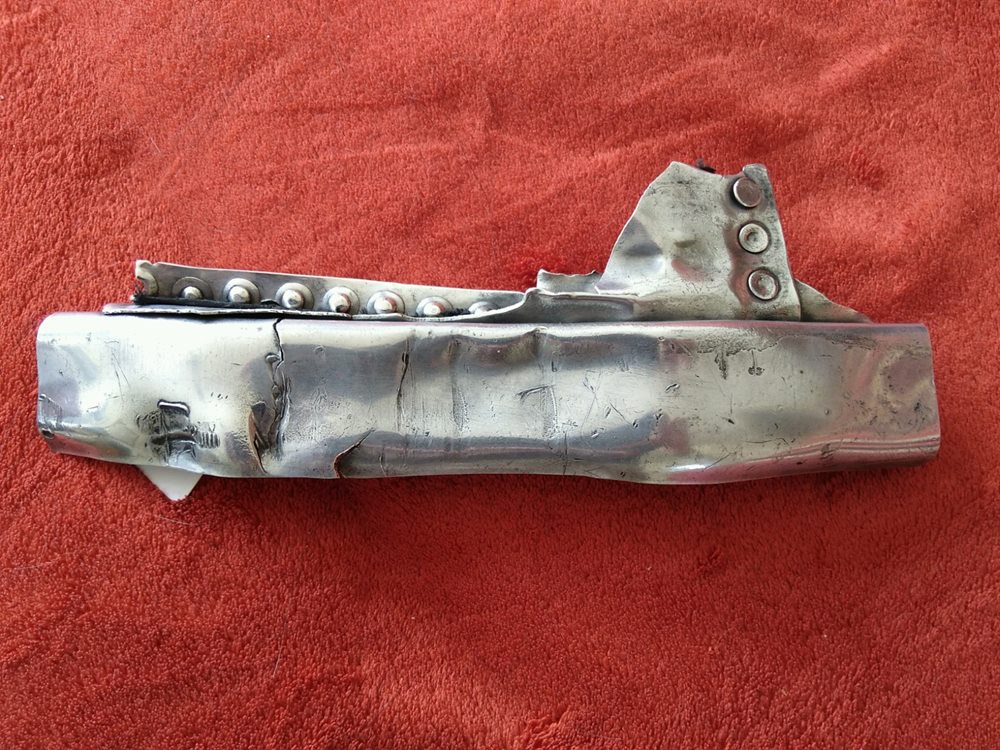
The Second World War resulted in the deaths of around 85 million people. Additionally, tens of millions more people were displaced. However, amid all the carnage people demonstrated remarkable courage, fortitude, compassion, mercy and sacrifice. We would like to honour and celebrate all of those people. In the War Years Blog, we examine the extraordinary experiences of individual service personnel. We also review military history books, events, and museums. And we look at the history of unique World War Two artefacts, medals, and anything else of interest.
Marketing The Tank Museum
The Tank Museum, situated in Bovington Camp, Dorset, is great example of how the modern museum must change to succeed. The Tank Museum’s marketing success has taken time and lots of moving parts. The engine of this growth and innovation has been the museum’s partnership with Wargaming.net, the award-winning developers of the massive multiplayer online game World of Tanks.
UK tourism is big business. According to VisitBritain.org nearly 4 million people currently work in the sector and it’s expected to generate £257.4 billion by 2025 (1). Thousands of attractions from castles and galleries to wildlife parks compete to attract domestic and overseas visitors. There are 2,500 museums alone in the UK (2). What is more, visitor expectations have grown exponentially. Visitors demand more bang for their buck, and will holler loudly on social media and review sites if they don’t get it.
Museum on a Mission
Today’s museums need clarity of purpose, specialist skills and marketing teams to win the war of visitor attraction. The Tank Museum, situated in Bovington Camp, Dorset, is great example of how the modern museum must change to succeed. The museum has a clearly stated purpose, "To tell the story of tanks and the people who serve with them (3)". Its mission can be summarised as “to conserve, develop and interpret the national collection of tanks and armoured fighting vehicles to educate and inspire people (4).”
The museum started out as little more than a shed that housed a small number of important military vehicles from the First World War. In 1947, the museum opened to the public. By 1981, it had around 120 armoured vehicles in its collection. The arrival of a new curator saw a period of expansion, as the museum refocused its efforts on vehicle restoration and conversation. In the noughties, a second period of expansion saw the restoration of Tiger 131, introduction of the annual Tankfest flagship event, an upgraded arena, new museum entrance, display hall and Vehicle Conversation Centre. Today, The Tank Museum holds the world’s largest collection of tanks, attracts over 200,000 visitors annually, and plays an important educational role (5).
Wargaming.net
The Tank Museum’s marketing success has taken time and lots of moving parts. The engine of this growth and innovation has been the museum’s partnership with Wargaming.net, the award-winning developers of the massive multiplayer online game World of Tanks. Since 2011, Wargaming.net has sponsored The Tank Museum’s main summer event, Tankfest. In 2013, they sponsored the creation of The Tank Museum’s state-of-the-art Education Centre. In 2014, Wargaming.net sponsored the ‘Fury’ exhibition, which celebrated the museum’s involvement in the making of David Ayer’s war movie (6).
At Tankfest 2015, Google partnered with Wargaming.net and The Tank Museum to create the UK’s first virtual reality (VR) military museum experience (7). In recent years, the museum’s Vehicle Conservation Centre has become the gaming hub of Tankfest with an array of activities that are streamed live across various platforms such as Facebook, Instagram and YouTube. Wargaming.net offers gamers special premium versions of classic tanks such as The Tank Museum’s ‘Fury’ Sherman for limited periods. Opened in April 2017, World of Tanks supported the Tiger Collection exhibition, which brought together every member of the Tiger tank family in one display for the first time. Wargaming.net also supplied a virtual reality Sturmtiger, when arrangements for the loan exhibit fell through (8). The company has also been instrumental in bringing guest vehicles, such as the Char B1 medium tank and “Bretagne” Panther, from the Musée des Blindés (French Tank Museum), to appear at Tankfest.
Meeting Audience Demand
In a survey by the American Alliance of Museums, millennials (those born between 1980s and early 2000s) said that traditional museums were “static places for exhibiting things”. The survey found that millennials want interactive, immersive and participatory activities from museums (9). Today, technology makes it possible to create these interactive, immersive experiences. However, most museums lack the funds and expertise to harness technology themselves. Instead, they need like-minded corporate partners and sponsors such as Wargaming.net and Google.
A New Reality
Sponsorship works best when the parties involved share similar values, target the same audiences and have closely aligned objectives. Wargaming.net have created a variety of educational activities, from dedicated websites, augmented and virtual reality experiences to education centres. One of the game developer’s stated aims is “to promote an interest in history and show that education can be an engaging and even enthralling experience.” The virtual recreation of the Sturmtiger for The Tank Museum’s Tiger Collection exhibition is just one example of how Wargaming.net is working with military museums across the world to create amazing, interactive “mixed reality” experiences. Together, institutions like The Tank Museum and companies like Wargaming.net are changing visitor experiences from something static and one-dimensional into something interactive and immersive. What’s more, the experience is no longer confined by geography, physical exhibition space or artefact availability. The digital world knows no bounds. Of course, the ability to create more engaging, memorable visitor experiences delivers commercial benefits for the museum and its sponsors from brand building and increased visitor numbers to selling more premium features on your game platform and merchandising. It’s a win-win for everyone.
Education
In 2017, 6,924 schoolchildren and accompanying adults visited The Tank Museum as part of formal education programmes, an increase of over 1,500 from the previous year. The museum runs activities and events that relate to science, technology, engineering, arts and maths (STEAM) for primary and secondary schools. It has also developed partnerships with a number of universities. The museum’s educational programmes help anchor the institution within the local community, engage with completely new audiences and preserve the history of armoured warfare for generations to come (10).
The Tiger Workhorse
Today, Tiger 131 is the world’s most famous tank. It is also The Tank Museum’s most popular exhibit. Captured in April 1943, Tiger 131 was inspected by King George VI and Winston Churchill before being shipped to the UK where it went on public display. Next, the tank was subjected to an extended period of testing and evaluation. In 1951, Tiger 131 was sent to The Tank Museum. After a long period as a static exhibit, restoration work started in 1990. By 2003, the tank had been returned to running order, making it the world’s only operational Tiger 1. In 2014, Tiger 131 featured in the Hollywood war movie ‘Fury’. The last time a genuine Tiger tank had appeared in a film was 1950. In 2017, Tiger 131 was centre of attention again when the museum opened its Tiger Collection exhibition. The tank has also appeared in a number of history documentaries. The Tank Museum now runs two dedicated Tiger Day events every year. In 2017, these events attracted 4,500 visitors to the museum. Regular ‘Ride the Tiger’ online auctions and raffle ticket sales generate much needed income for on-going preservation and maintenance work. Tiger 131 merchandising, from t-shirts and mugs to World of Tanks special packages, make sure the vehicle earns its keep (11).
Merchandising
Retail marketing and merchandising has an important role to play at The Tank Museum. Naturally, it encourages secondary spend, money generated over the price of museum entry. Retail marketing also improves the customer experience, increases perceived value and strengthens brand engagement. As part of the museum’s recent makeover, the restaurant, gift shop and product mix of souvenirs have been better aligned with the museum’s brand values, personality, narrative and visual identity.
The Tank Museum gift shop and online store offer a wide selection of branded merchandise from mugs, books, wall art and apparel to model kits (12). In partnership with a number of manufacturers, the museum has created unique souvenirs such as branded versions of the classic board games Monopoly and Cluedo. Shoppers can buy a wide selection of Tiger tank themed items such as Tiger 131 premium lager, COBI Tiger 131 model kits and a reproduction of the Tigerfibel, the original Tiger tank crewmember’s manual. The gift shop’s design, layout and choice of merchandise aims to surprise, delight and extend the visitor experience. The gift shop enables visitors to continue learning about the history of the various exhibits. It also creates an opportunity to transform the one-time visitor into a lifelong ‘Friend of the Museum’.
Overcoming Geography with Social Media
The Tank Museum is Dorset’s highest ranked visitor attraction on TripAdvisor and has won numerous tourism awards. However, the museum’s location in rural Dorset also poses a challenge. It takes the average visitor 2-hours to travel to the museum. To extend its reach and build lasting relationships, The Tank Museum has turned to social media platforms such as Facebook, Twitter and YouTube.
In 2017, the museum’s YouTube subscribers reached 100,000 with over 7 million views of its content. Today, the museum has over 208,000 subscribers with a view count of 32.5 million. YouTube is particularly effective at reaching young men aged between 15 and 25. Traditionally, this is a difficult demographic for organisations within the heritage community to attract. In 2017, The Tank Museum was the most ‘liked’ military museum in the world on Facebook with 300,000 followers. The total reach of the museum’s content through Facebook was over 37 million users for the year. The museum’s Facebook page also integrates with its online store and YouTube channel. Currently, the museum also has 26,500 Twitter followers (13).
According to the online traffic statistics from SimilarWeb, the museum’s website receives around 280,000 visitors annually. 83% of all traffic is direct or from search. Just 8.42% comes from social. However, it’s a different story when you look at the online store analytics. This site receives 100,000 visitors per year. 41% of the site traffic comes from referrals and 11.23% from social media with YouTube being the most effective (14). To increase engagement, promote learning and generate additional income, it makes sense for the museum to experiment and invest in social media. After all, people are naturally passionate about their hobbies and interests. Unlike many organisations, who fail to understand the basic premise of social media, the museum has found that ‘likes’, ‘follows’ and ‘views’ can translate into visitors, supporters and sales.
Clear-Sighted Strategy
Heritage and tourism are highly competitive markets. In order to compete, institutions like The Tank Museum must have clear-sighted, long-term commercial strategies that enable them to pursue their objectives. In order to remain relevant, museums must diversify, adapt and make the most of their assets. Back in 1998, The Tank Museum began to build the infrastructure it would need to succeed in the future. It has expanded its education programme, demonstrations and events. These activities have steadily increased visitor numbers from home and abroad. In order to attract a younger audience, the museum has established an extremely successful on-going partnership with online game developer, Wargaming.net. They have provided much needed funds and technical expertise to build a new Education Centre and pioneering virtual reality experiences. The museum has not been shy about sweating its assets. A restored Tiger 131 is forever in the spotlight. Finally, the museum has used the Internet and social media to overcome the challenge of its rural location to reach new demographics. According to the Charity Commission, The Tank Museum generated an income of £5.8 million in 2017 (15). This money will help ensure the story of the tank and people who serve with them continues to be told, now and in the future.
-END-
Sources:
1. Britain’s visitor economy facts, Visitbritain.org website: https://www.visitbritain.org/visitor-economy-facts
2. The Museum Association website https://www.museumsassociation.org
3. The Tank Museum Limited, Trustees' report and financial statements for the year ended 31 December 2017, Page 2.
4. The Tank Museum Limited, Trustees' report and financial statements for the year ended 31 December 2017, Page 2
5. The Tank Museum website, Museum History page, https://www.tankmuseum.org/about-us/history
6. Wargaming.net website news pages https://worldoftanks.com/en/news/press/wargaming-sponsor-education-center-tank-museum-bovington-england/ and The Tank Museum website news pages https://www.tankmuseum.org/year-news/bovnews53146
7. War History Online website, Wargaming Unveils its First Virtual Reality Tank Battle Reenactment, https://www.warhistoryonline.com/world-war-ii/wargaming-unveils-its-first-virtual-reality-tank-battle-reenactment.html
8. Deep South Media, Tank museum leads with world with augmented reality, Nik Wyness, Head of Marketing, The Tank Museum, webpage: https://www.deepsouthmedia.co.uk/8519-2/
9. American Association of Museums, Demographic Transformation and the Future of Museums report, Elizabeth E. Merritt, founding director. Download a PDF copy of the full report: https://www.aam-us.org/wp-content/uploads/2017/12/Demographic-Change-and-the-Future-of-Museums.pdf
10. The Tank Museum Limited, Trustees' report and financial statements for the year ended 31 December 2017, Page 5.
11. The Tiger Tank website https://blog.tiger-tank.com/
12. The Tank Museum’s online store: https://tankmuseumshop.org
13. The Tank Museum Limited, Trustees' report and financial statements for the year ended 31 December 2017, Page 5.
14. SimilarWeb provides a free online tool that generates real-time website traffic statistics.
15. The Tank Museum Limited, Data for financial year ending 31 December 2017, Charity Commission website: https://beta.charitycommission.gov.uk/charity-details/?regid=1102661&subid=0
D-Day 75th Anniversary Commemoration
As part of the D-Day 75th-anniversary commemorations, The War Years will be adding a range of content over the coming week.
As part of the D-Day 75th-anniversary commemorations, The War Years will be adding a range of content over the coming week.
The Story of D-Day, Part One
The Plan
The largest amphibious operation in military history, code-named Overlord, D-Day started in the early hours of 6 June 1944. The objective was an 80 km stretch of the Normandy coastline. An armada of 7000 ships planned to land 175,000 men, 50,000 vehicles and all their equipment by day’s end. 11,000 aircraft, oil pipelines under the English Channel and even giant Mulberry Harbours would be towed across the sea.
Neptune
Operation Neptune was the naval element of the Overlord plan. 7,000 vessels from battleships to landing craft, Neptune was truly an allied effort. British, American, Canadian, French, Norwegian, Dutch, Polish and Greek vessels all played a part in enabling the landing’s success.
The Landings
The Allies planned to land on 5 beaches code-named Utah, Omaha, Gold, Juno and Sword. The flanks or sides of the planned beachhead would be secured by airborne forces dropped during the night and early morning on 5/6 June.
Pegasus Bridge
Strategically important, the bridges over the Caen Canal and Orne River had to be captured to enable Allied tanks to operate east of the river, and prevent German counter-attacks against the landings.
Seized by a daring glider assault the bridges were successfully captured by Major John Howard’s D Company, 2nd Battalion, Ox and Bucks Light Infantry at just after midnight, 6 June 1944. Once captured it was vital Major Howard’s men held the bridges against counter-attacks until relieved by Lord Lovat’s 1st Special Service Brigade at 1 pm.
Merville
In the area immediately east of Sword Beach, some 4,800 elite airborne troops landed by parachute and glider. Men of the 9th Parachute Battalion took the German coastal battery at Merville that threatened the British landing beaches.
US Paratroops
The American 82nd and 101st Airborne Divisions secured the flanks of the US beaches. However, the 6,600 men dropped were badly scattered that reducing their initial effectiveness, although this did confuse the German defenders. The paratroopers successfully secured the exits from Utah Beach and captured bridges en route to Carentan.
The Story of D-Day, part Two
The American Beaches
Utah Beach
The D-Day landings started at the low water mark on a rising tide at 06.30hrs in the US sector and 07.30hrs for the British.
Strong coastal currents and obscuration of landmarks due to smoke from naval bombardment meant American invasion forces landed 2,000 yards south of their planned objective on Utah Beach. Luckily the area where troops from the 4th Infantry Division actually landed was less heavily defended, and casualties were mercifully light.
Pointe du Hoc
Just as Pegasus Bridge was vital to the success of the British landings so Pointe du Hoc was important to the Americans. Intelligence reports prior to the landings indicated that six 155mm guns in concrete emplacements sat atop a 177ft cliff. The guns threatened the landings on Utah and Omaha Beaches and had to be destroyed.
The elite 2nd Ranger Battalion was tasked with destroying the guns at Pointe du Hoc by direct assault from the sea, which meant scaling the cliffs while under fire. However, when the Rangers fought their way up to the gun emplacements they found them empty. The guns had been moved inland. Later, the guns were found and destroyed.
Omaha Beach
The most difficult terrain and heavily defended sector, Omaha Beach was the objective of the US 1st and 29th Infantry Divisions. At 5.40 am amphibious DD tanks launched 6,000 yards offshore, nearly all sinking in the heavy seas.
Only 5 tanks made it ashore to support the infantry landings. All but one of the 105mm field artillery guns also vital to the landings were lost. To make matters even worse, the naval and air bombardment had done little to reduce the German defensive positions commanding the exposed beach.
Seasick, heavily laden, troops of the nine companies in the first assault wave were decimated by German machine-gun, mortar and artillery fire. Those troops lucky enough to make it across the open beach took cover behind the sea wall.
The assault on Omaha initially stalled. However, gradually men formed small groups and started fighting their way up the bluffs that overlooked the beach. Later, navy destroyers came dangerously close to shore to give much-needed fire support. By day’s end, Omaha Beach was in American hands.
Brigadier General Norman “Dutch” Cota, several NCOs and Privates received decorations for gallantry during the action at "Bloody Omaha".
Today, 3 June 2019, we post a short video taken back in June 2010 on a visit to Omaha Beach and the American Cemetery and Memorial.
The Story of D-Day, part Three
The British, French and Canadian Beaches
Gold Beach
Westernmost of the British/Canadian beaches, code-named Gold, were assaulted by the 50th Division of the British XXX Corps. Specially developed armoured vehicles were landed ahead of the infantry to deal with beach obstacles, mines and the sea wall. Some 2,500 obstacles and mines needed to be cleared from Gold Beach alone. Allied forces quickly overcame German defences and moved inland.
During the advance of the 69th Brigade, Company Sergeant Major, Stan Hollis of the Green Howards won the Victoria Cross, for repeated acts of valour, Britain’s highest military honour. This was the only VC won on D-Day.
Juno Beach
Canada made a terrific contribution to the Allied war effort. Juno Beach was assigned to the Canadian 3rd Division. Like the British, the Canadians used special armoured vehicles to help overcome beach obstacles, mines and strong points. These vehicles were nick-named Hobart’s “funnies” after their creator Major General Sir Percy Hobart.
The town of Courseulles was strongly defended by the Germans but duly taken. The Queens Own Rifles suffered severe casualties crossing the beach at Bernieres. The Canadians made contact with 50th Division on their right by day’s end.
Sword Beach
The easternmost landing zone, Sword Beach, was assaulted by the British 3rd Division. The 3rd Division’s objectives were perhaps the most ambitious of the D-Day operation: capture or mask the Norman city of Caen by nightfall. The 3rd Division also knew it was likely to be counter-attacked by tanks of the German 21st Panzer (Armour) Division.
British intentions to quickly move off Sword Beach and drive inland were held up by resistance from German strong points. British troops reached Lebisey Wood, just three miles short of Caen, but could advance no further.
Special Forces - The Commandos
French Commandos led by Philippe Kieffer took Ouistreham casino and secured the canal gateway. However, the French suffered heavy casualties and Kieffer was wounded twice during the fighting.
Commandos of the 1st Special Service Brigade landed on the 'Queen Red' sector of Sword Beach at approximately 8.40 am, 6 June 1944. Commanded by Brigadier Simon Fraser, Lord Lovat, the 1st Special Service Brigade’s mission was to push inland and link up with the lightly armed British 6th Airborne Division holding Pegasus Bridge and bridge over the Orne River.
Today, we have added 241 photos to our Flickr site taken during visits to the D-Day beaches, Pegasus Bridge Memorial and Museum, Normandy American Cemetery and Memorial, Omaha Beach Memorial Museum, Airborne Museum, Sainte-Marie-du-Mont and Sainte-Mère-Église in 2010 and 2014.
World War One Missing Manuscript Returns Home
In this book review we take a look at a lost manuscript of the Great War finally published. Field Dressing by Stretcher Bearer, France 1916 – 1919, is a slim volume of World War One poems by Alick Lewis Ellis. He served as a stretcher bearer with the 2/3rd London Field Ambulance, 54th Division, London Regiment, and took part in the Battle of the Somme, Arras, Ypres and Cambrai.
Field Dressing by Stretcher Bearer, France 1916 – 1919, is a slim volume of World War One poems by Alick Lewis Ellis. He served as a stretcher bearer with the 2/3rd London Field Ambulance, 54th Division, London Regiment, and took part in the Battle of the Somme, Arras, Ypres and Cambrai. During his time on the Western Front, Alick took to writing poetry to capture and make sense of his experiences. His notebook of poems was lost for nearly a hundred years until someone anonymously handed it to Dan Hill at the Herts at War Society in 2017. Dan Hill subsequently tracked down Alick’s remaining family, and together they worked to publish Field Dressing by Stretcher Bearer. To recognise the essential role played by the Royal Army Medical Corps (RAMC) and military mental health charities, a proportion of the book’s profits will go to Combat Stress and Veterans With Dogs.
Alick Lewis Ellis appears to have led an unremarkable life. He had a basic education and looked forward to a career as a grocer if the war had not intervened. His war poems might not have the literary complexity and construction of Wilfred Owen, Robert Graves and Siegfried Sassoon. Nevertheless, they have merit and share many common themes with the famous war poets of his generation. His poems reflect the direct experiences of war. They celebrate their comrades, condemn the war leaders, scorn the indifference of many civilians, and express a longing for home. Unfortunately, we know nothing of Alick’s creative influences or inspirations. The documentary of his life is reduced to a few faded photos, sketchy family memories and military service records.
Regardless of the many horrors and privations of the Western Front, Alick seems to have maintained his sense of humour. In poems like Revenge, he jokes about the quality of Army food, especially the rock-hard biscuits issued to the troops. In Training and Reality, he uses humour to illustrate just how poorly depot life and parade ground drill prepared soldiers for combat. After the war, Alick returned to working in retail, but little else about his life is known. Sadly, he passed away in November 1953. Alick’s poems might not be the greatest literary works, but they are honest, funny and poignant. Regrettably, they tell us familiar stories as old as war itself.
Spitfire September
In this post, we review a Spitfire September. First, we take a look at the new Spitfire documentary film. Next, the Battle of Britain Air Show at IWM Duxford, and finally, John Nichol’s book, Spitfire: a Very British Love Story. Tally-Ho!
The 15th of September is Battle of Britain day. It commemorates a turning point in the struggle for aerial supremacy in the skies over Britain fought by the RAF and German Luftwaffe during the summer and autumn of 1940. German daylight raids would eventually cease by the end of October, and Operation Sealion, the German codename for the amphibious invasion of southern England, would be cancelled. It was Nazi Germany’s first significant defeat. A victory won by a handful of daring pilots from across the globe and two iconic aircraft: the Hawker Hurricane and Supermarine Spitfire. However, one aircraft would go on to capture the hearts and imagination of the nation. Since 1940, the Spitfire has become an enduring symbol of courage, fortitude, ingenuity and Britishness.
Spitfire – Inspiration of a Nation
My own little September love affair with the Spitfire started with the release of the documentary film Spitfire – Inspiration of a Nation, directed by David Fairhead and Ant Palmer. Narrated by Charles Dance, the film is a biography of both the aircraft and the men and women who flew it. The original music score by composer Chris Roe and mesmerising aerial photography by director John Dibbs work beautifully together. The film was the last onscreen interview given by Battle of Britain fighter pilot and author Geoffrey Wellum, DFC. The film is also the last testament of Mary Ellis, who flew 76 different types of aircraft during the war as part of the Air Transport Auxiliary (ATA). Ferrying aircraft between factories and operational squadrons, the ATA played a vital support role. During her career, Mary delivered over 400 Spitfires safely to their destinations. The film also features a sound recording of aero engineer and chief designer of the Spitfire, R.J. Mitchell, who died of cancer before his creation went into service. Spitfire is a great piece of documentary film-making, and definitely worth the purchase price.
Battle of Britain Air Show
The last event to mark the centenary of the RAF’s first 100 years, the Battle of Britain Air Show was held at the IWM Duxford on the 22nd and 23rd of September, 2018. Unfortunately, the weather on Saturday was extremely challenging with heavy, persistent rain all afternoon. Nevertheless, the event organisers, aircraft owners and pilots did an excellent job. The show told the history of the RAF from its founding at the end of World War One to the modern day. Highlights of the display included two de Havilland Vampire jets, Battle of Britain Memorial Flight (Spitfire, Hurricane and Lancaster), a 617 Squadron flypast (Tornado GR4, new F-35 Lightning II and Avro Lancaster) and the Red Arrows. The show closed with a formation of 18 Spitfires. We also got to see iconic warbirds such as the P-51D Mustang, Boeing B-17 Flying Fortress, Catalina seaplane, Westland Lysander and Soviet Yak 3. Sadly, the MiG-15 was not able to fly due to adverse weather conditions. The Battle of Britain Air Show was a very impressive event, and one I would highly recommend. There’s nothing like seeing 18 Spitfires take to the sky, and listening to the combined roar of all those Merlin and Griffon engines.
Spitfire: a Very British Love Story
Finally, I finished my Spitfire September by reading John Nichol’s book Spitfire: a Very British Love Story. A former RAF pilot, John Nichol knows a thing or two about aerial combat. During the 1991 Gulf War, he was shot down, captured and tortured by Iraqi forces. His book examines the Spitfire’s origins and continued development during the war years when the threat from new enemy aircraft demanded constant innovation. When the Spitfire was finally retired from RAF service in 1957 there had been 47 variants including the Fleet Air Arm’s Seafires. However, the book is really a collection of stories about the different roles the Spitfire played in the lives of frontline pilots such as Allan Scott and Hugh ‘Cocky’ Dundas, and ATA pilots like Diana Barnato Walker. Sadly, unlike the beloved Spitfire, the veterans of the conflict do not endure. John Nichol interviewed around 40 veterans over a three-year period of research and writing his book. By the time it was published only three were still with us. Soon the “greatest generation” will be gone forever, but while Spitfires continue to fly, let us hope they will never be forgotten.
Fragments of Triumph and Tragedy
In this blog, we look at two fragments of World War Two aviation history, one a German Luftwaffe Bf-109E-3 and the other a Royal Air Force Spitfire Mk.Vb. We learn how one pilot was to survive a short, brutal dogfight and how the other was to die and only receive a proper burial 70 years later.
Britain stands alone
After the invasion and occupation of France by Nazi Germany between May and June 1940, Britain stands alone. In July 1940, the struggle for air supremacy over the British Isles begins. The Battle of Britain will last three and a half months. Initially, the German Luftwaffe (air force) attacks dockyards and British shipping in the English Channel. The Royal Air Force (RAF), equipped with fewer fighters, seems hopelessly outmatched. However, the RAF does have some advantages. Thanks to Hugh Dowding, head of Fighter Command, Britain possesses the world’s first truly integrated air defence system including radar technology. As well as knowing when and where the enemy will strike, Dowding ensures Fighter Command is equipped with Hurricanes and Spitfires to intercept them. The RAF also enjoys home advantage while German aircraft operate at the extreme of their range.
The last flight of Lt. Albert Striberny
On 8 July 1940, just as the Battle of Britain is about to begin, Leutnant Albert Striberny, 3/LG2 (3 Staffel/Lehrgeschwader2), is sitting in his Messerschmitt Bf 109E-3 (work no. 2964). It’s early evening, and Lt. Striberny thinks he’s done for the day. Instead, his Staffel is ordered to escort a Dornier 17 (Do 17) on a reconnaissance mission over Dover. Once over the target, the Spitfires of 54 Squadron jump the Staffel.
Striberny manoeuvres his Bf 109 behind a Spitfire only to discover another one is on his tail. It isn’t much of a fight. He hears a sound like someone throwing peas against a metal sheet and the cockpit fills with black smoke. Covered in aviation fuel, Striberny prepares to bail out, but he’s worried about hitting the tailplane when he makes his escape. Finally, he slides open the cockpit canopy, flips the plane over, releases his straps and drops out. The parachute opens; he floats gently to earth and is immediately taken, prisoner. His Bf 109 doesn’t do so well. It crashes, disintegrating on impact, at Buckland Farm, Sandwich, Kent. One of the few recognisable pieces is the tail section with the unit’s Micky Mouse insignia. 78 years later, almost to the day, I picked up a piece of that Bf 109E-3 at Flying Legends.
Click to move to next image
Tragic accident
Spitfire AR403 was an Mk Vb built by Westland Aircraft under licence. The aircraft was fitted with the signature Merlin 45 engine and armed with two 20mm cannons and four .303 machine guns. On 11 April 1942, she was delivered to the 38 maintenance unit and then joined the 131 Squadron. She then went to 165 Squadron based at Llanbede. In August, the squadron moved south to Gravesend and started operational sweeps against the Luftwaffe over Northern France. Next, she was transferred to the 65 Squadron. On 16 January 1943 AR403 piloted by New Zealander Sgt. Malcolm Robertson was on a training flight over southern Scotland. The exercise was to practice climbing and aerobatic manoeuvres. However, during one of these manoeuvres, the Spitfire was reported to have dived vertically out of the cloud. It crashed into the grounds of Wedderlie House, catching fire on impact.
Click to move to the next image
A final resting place for Sgt. Robertson
Sadly, Sgt. Malcolm Robertson was killed in the crash. He was laid to rest at Craigton Cemetery, Glasgow. However, in 2012, following an expert anthropological examination, further human remains were found at the crash site. These remains were positively identified as belonging to Sgt. Robertson. These remains were reinterred during a ceremony with “the honour and dignity” befitting a pilot at Sgt. Robertson's grave in 2013. An initial crash inspection in 1943 recovered parts of a uniform, dog tags and a single flight boot, which were interred at Craigton Cemetery in Glasgow, following a wartime board of inquiry. Sgt. Robertson was just 21 years old. An exhibition of artefacts from Spitfire AR403 was held near Edinburgh to help raise funds for a memorial to Sgt. Robertson.
Sources: www.deadlinenews.co.uk, www.iwm.org.uk/collections/photographs
Two Books on the Tank War for Northwest Europe
In this double book review, we look at two very different titles that both look at the tank war in Northwest Europe from very different perspectives. Ken Tout's book A Fine Night for Tanks takes an almost forensic look at Operation Totalize. Tank Action by David Render is a very personal portrait of the Allied advance from the Normandy beaches to Germany from the viewpoint of a junior tank commander.
The last year of the war in Northwest Europe was a bloody and protracted affair, especially if you were in an M4 Sherman tank at the cutting edge of the Allied advance. A Fine Night for Tanks, The Road to Falaise, by Ken Tout (originally published in 1998) takes an almost forensic look at Operation Totalize. In stark contrast, Tank Action by David Render with Stuart Tootal, An Armoured Troop Commander’s War 1944-45, recalls the very personal war experiences of a junior British tank officer.
A Fine Night for Tanks, The Road to Falaise
Ken Tout’s book is a detailed study of the various elements of the joint British and Canadian operation to break the German line south of Caen and ultimately help close the Falaise Gap. After a successful night attack using tanks and troops mounted in hastily converted M7 Priest self-propelled gun carriages, nicknamed Kangaroos, the operation stalled. Historically, Operational Totalize has generally been regarded as just another hammer blow against the 1st SS Panzer Corps. Preceding operations such as Epsom, Windsor and Charnwood were bloody battles of attrition costing thousands of men and hundreds of tanks on both sides. However, the difference was the Germans could ill-afford such grievous losses while the Allies had a seemingly endless supply of replacements.
The Death of Wittmann
An interesting footnote to Operation Totalize was the death of German panzer ace, Michael Wittmann. An SS-Hauptsturmführer with the 101st SS Heavy Panzer Battalion, Wittmann is credited with around 135 tank kills. Although completely unknown to Allied troops during the war, Wittmann has become legendary, especially for his encounter with the British 7th Armoured Division at the Norman town of Villers-Bocage. The circumstances of Wittmann’s death during Operation Totalize have been much debated. Ken Tout tells how Trooper Joe Ekins, 1st Northamptonshire Yeomanry, the gunner in a Sherman Firefly, caught Wittmann’s Tiger in the open and fired the fatal shot. I had the pleasure to meet Joe Ekins briefly at Tankfest a few years ago.
While being informative and easy to read, Ken Tout’s book does have a number of factual errors and typos, such as repeatedly referring to a Panther’s 88mm gun when it was armed with a 75mm.
Tank Action
Tank Action by David Render tells his very personal story of fighting across Northwest Europe from the D-Day beaches and infamous bocage countryside to Holland and finally into Germany. Render paints a vivid picture of life as a Troop Commander of an M4 Sherman tank with all its discomforts and many dangers. Render explains the many shortcomings of the standard M4 from its thin armour and high profile to its 75mm gun. The Sherman lacked the penetrating firepower of German 88mm anti-tank guns, Panzerfaust handheld anti-tank weapons and most types of panzer. However, probably the single most worrying feature of the Sherman was its terrifying propensity to burst into flames the moment it was hit. The Germans called the Sherman the “Tommy Cooker” while British tank crews renamed it the “Ronson” after a popular brand of cigarette lighter famed for its ability to light first time.
Two Weeks Life Expectancy
As well as the many deficiencies of British Army equipment, Render also describes the amazing comradeship, courage and ingenuity of officers and men fighting against a determined, well-armed enemy. As a junior officer, Render’s life expectancy was just two weeks once he went into the line. Over a year of almost constant action, Render would find that his mental and physical reserves quickly eroded. He freely admits that fear threatened to overwhelm him every time he was ordered to climb back into his Sherman and continue the advance.
War without End
The Sherwood Rangers Yeomanry had seen extensive action in North Africa (1940-1943) prior to David Render joining them. Once in Normandy, he noticed that prolonged exposure to combat had made many of the desert veterans excessively cautious and unreliable. On the job training was the order of the day. He would have to learn his craft from bitter, hard won experience as he and his crew fought across Normandy, Belgium, Holland and into Germany. By war’s end, the Sherwood Rangers would have earned 30 battle honours, 78 gallantry awards at the cost of 827 casualties killed, wounded and missing. However, for many of the veterans the war would never be over. At aged 90, and with a successful business career behind him, David Render remains haunted by the loss of many comrades, and one in particular. His great friend, Harry Heenan, killed in a freak accident just after saving David’s life during an engagement with a concealed 88mm anti-tank gun.
David Render’s book is a very personal, first-hand account of the tank war in Northwest Europe. In Render’s world, soldiers seldom knew what was happening in the next field or hedgerow. They knew nothing of the strategic decisions being made by Allied high commanders like Eisenhower, Montgomery or General Brian Horrocks. Instead, they focused on keeping their tanks ready for the next day’s action. They worried about being caught in a burning tank as it “brewed up”. They foraged for extra food to supplement their meagre rations. They struggled against fatigue, fear, and the terrible odds against any of them making it through alive. Sadly, David Render recently died aged 92.








